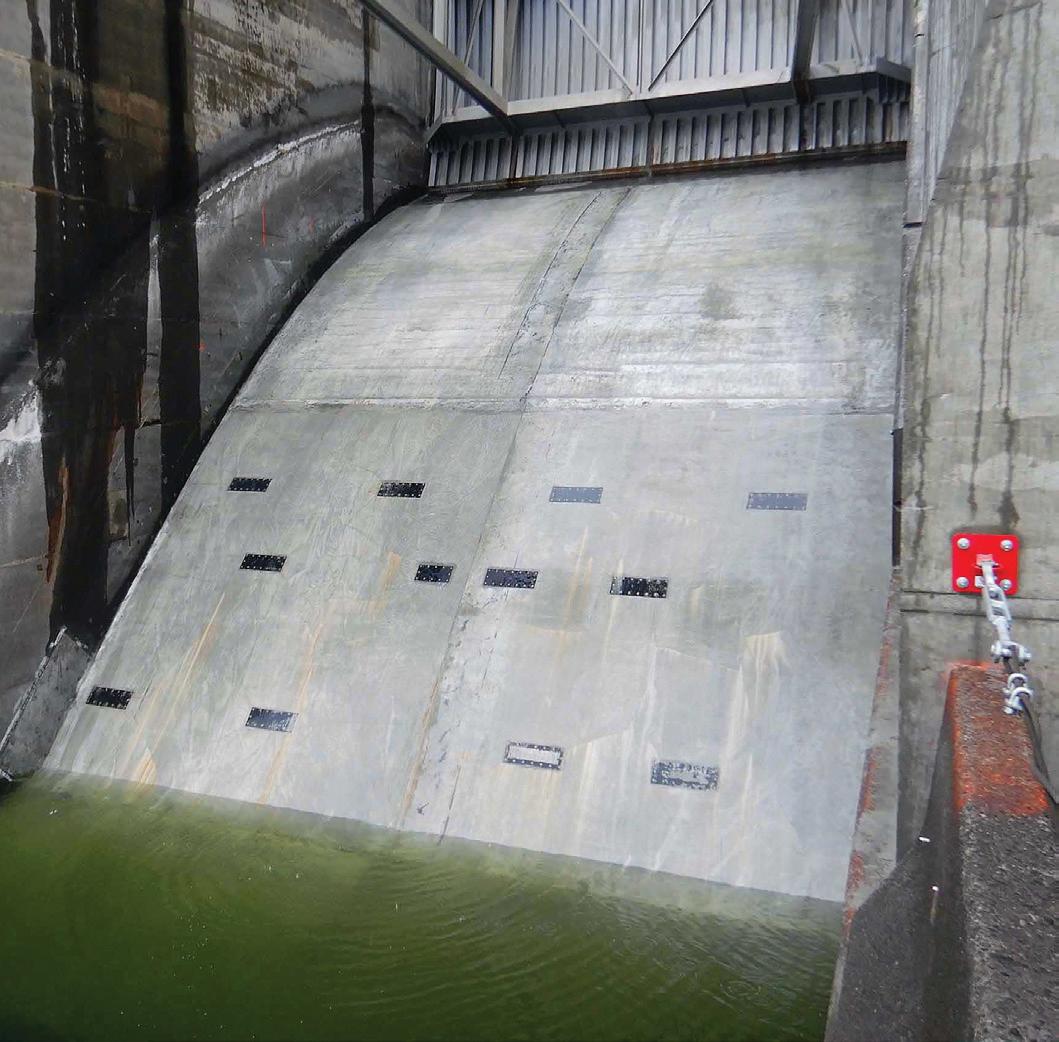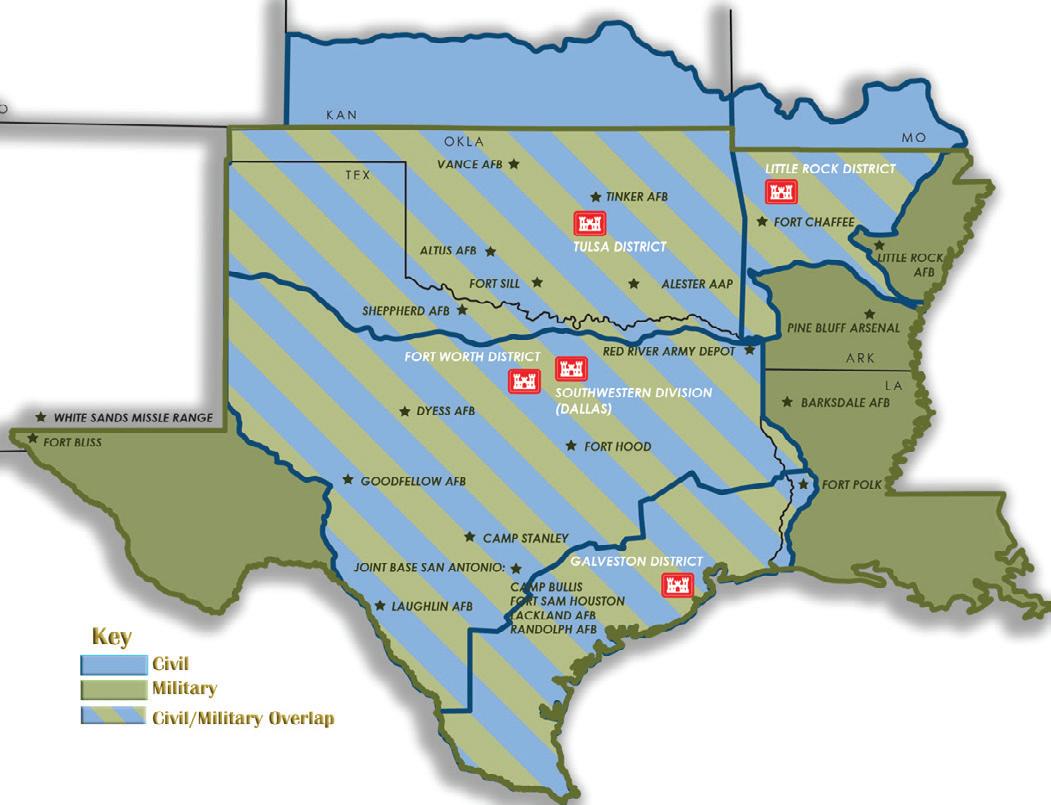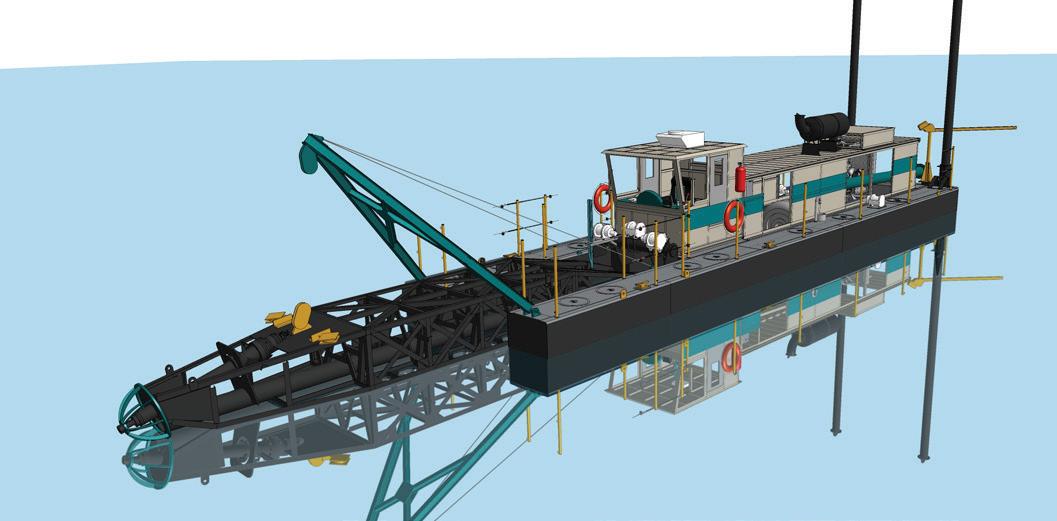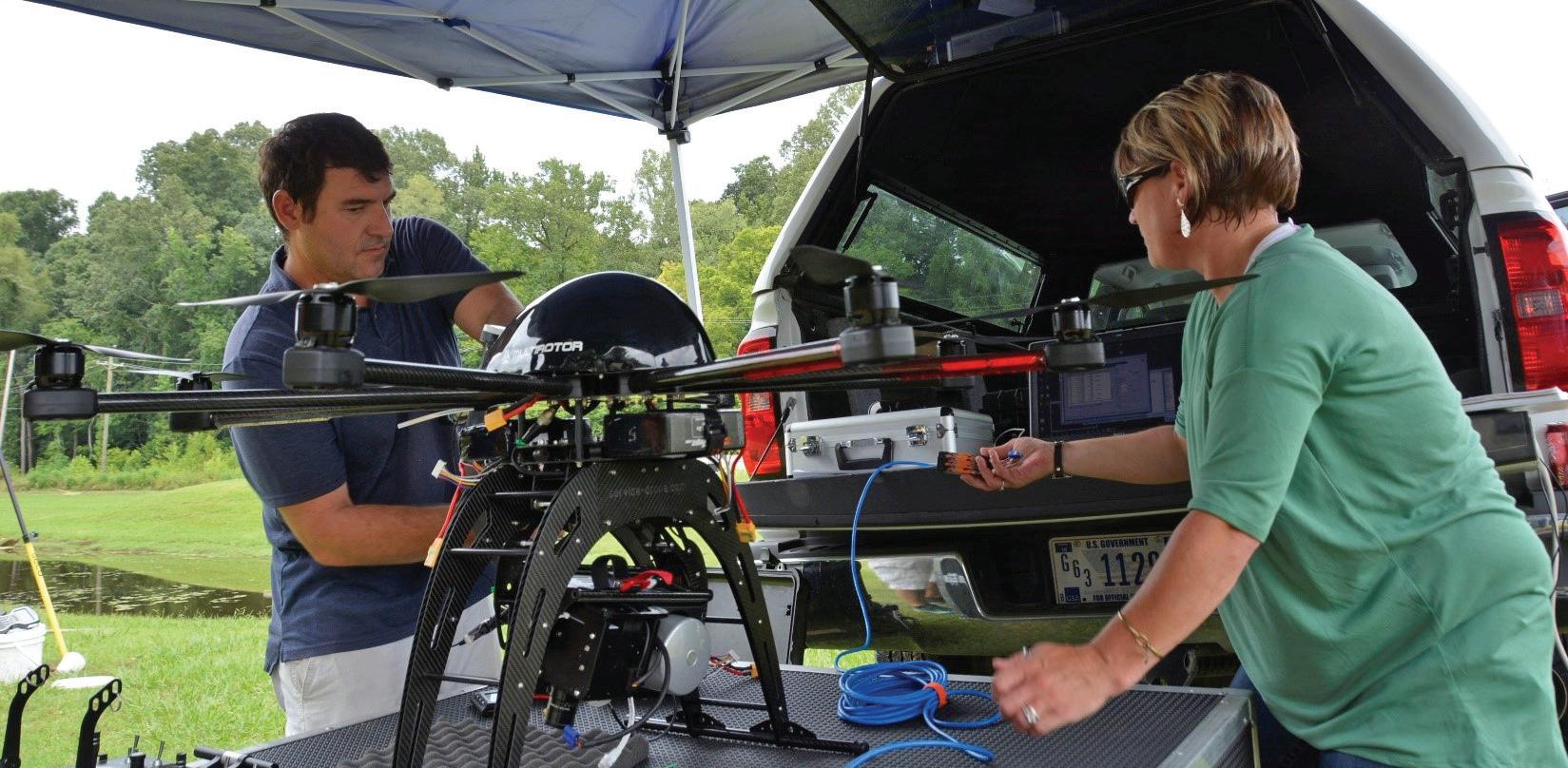
3 minute read
WALLA WALLA DISTRICT DEVELOPS FISH SUSTAINABILITY PROJECTS IN THE NORTHWEST
from U.S. Army Corps of Engineers: Building Strong, Serving the Nation and the Armed Forces, 2020-2021
NORTHWESTERN DIVISION
BY JOE SAXON, Walla Walla District
Advertisement
Environmental sustainability in the Snake and Columbia rivers systems starts with fish, and restoring salmon, steelhead, and sockeye runs remains one of the U.S. Army Corps of Engineers’ (USACE) Walla Walla District’s highest priorities.
The latest fish survival improvements at the Lower Snake River dams involve myriad partners and federal agency scientists, biologists, and engineers developing projects including the Ice Harbor Dam advanced technology turbine; the passive integrated transponder detector; the juvenile bypass system; and river cooling systems at Lower Granite Dam; and the adjustable spillway weir and fish cooling systems at Little Goose Dam.

A view of the spillway bay following completion.
A NEW ADVANCED TECHNOLOGY TURBINE INSTALLED AT ICE HARBOR DAM
Ice Harbor Dam’s Unit No. 2 runner was upgraded in 2019 with a fixed blade runner designed for fish passage survival improvement. USACE officials say the improved design will reduce maintenance costs, increase power generation by 3% to 4%, and increase fish survival.
During the next few years, improvements will include installing new adjustable runner replacements on the other two units. All three turbine units will utilize greaseless bushings in the turbine wicket gates to reduce oil in the river. This new turbine design process serves as a model for future modernizations planned at McNary Dam and other federal dams in the Northwest.
JUVENILE BYPASS SYSTEM
USACE developed the juvenile collection and bypass system at Lower Granite Lock and Dam to minimize turbine passage, increase fish survivability, and reduce injury in the existing bypass system. Work included: replacing or “daylighting” the existing underground pressurized fish passage with an elevated, above-ground, screen-covered, 2,700-foot-long flume; enlarging the dam’s fish passage orifices and collection channel; creating a new primary bypass outfall pipe that returns fish to the river at the location expected to improve survival; and reusing water removed from the juvenile fish bypass channel and repurposing it for adult fish ladder attraction.
PASSIVE INTEGRATED TRANSPONDER TAG DETECTORS
Eleven new passive integrated transponder (PIT) tag detectors were installed at Lower Granite Dam this spring to provide fish research, monitor data, and validate fish survival rates. The system spans the entire 50-foot width of Spillbay No. 1, with antennas buried in the concrete.
LITTLE GOOSE ADJUSTABLE SPILLWAY WEIR
Spillway weirs, or “fish slides,” allow juvenile salmon and steelhead to pass the dam near the water’s surface under lower accelerations and lower pressures, providing a more efficient and less stressful dam passage route as they migrate downstream to the ocean.
Little Goose Dam has an adjustable spillway weir that became operational in 2018. It’s more efficient, eliminates the need of a three-person crew to make adjustments, and can make adjustments in 30 minutes, versus the three days it took previously.
RIVER COOLING SYSTEMS AT LOWER GRANITE AND LITTLE GOOSE DAMS
The years 2015 to 2019 were among the hottest years on record. Warm-water temperatures above 68 degrees aren’t beneficial for salmon and steelhead in the Columbia and Snake rivers systems. When summer temperatures spiked, the district’s scientists, biologists, and engineers responded to regional concerns by developing water cooling systems at Lower Granite and Little Goose dams.

Contract workers prep one of Lower Granite Dam’s spillway bays for installing passive integrated transponder tag detectors to provide monitoring data that validates fish survival rates.
The system cools the Snake River by augmenting it with flows of colder, denser water released from Dworshak Dam, and by incorporating additional upgrades to promote cooling within the Lower Granite and Little Goose dams’ fish ladders.
To reduce water temperatures, a large chimney with an open top and bottom was designed to encapsulate the fish ladder intake conduit and draw cooler water from 60 feet beneath the water’s surface. A large spray bar was developed that uses cooler water pumped from deep in the forebay to improve conditions for the fish ladder exit and the nearby forebay.
Taken together, these steps reaffirm USACE’s and federal agencies’ commitment to fish improvements and go a long way toward ensuring the long-term viability of salmon, steelhead, and sockeye in the Northwest.











